Imagine living in an unsafe neighbourhood of Mumbai as a child. The experience can be quite uncomfortable and daunting. Mushahid Khan, a 14-year-old residing in Mumbai’s Ghatkopar, had similar observations of his neighbourhood not being safe for children to grow up in. A student of Maneklal Municipal Hindi School, Mushahid built a game using open-source software to raise awareness about child safety among parents and caregivers in his rather notorious neighbourhood. In the game, the users [parents] face varied situations at each level that puts their child’s safety at risk. The risk could metal or physical harm the child is afflicted with. The users then have to identify these risks and fix them, after which they clear the levels and win a title of ‘Shandaar Mr Papa’ or ‘Adbhut Mrs Mummy’.
Mushahid’s project was made possible due to his training with Pi Jam Foundation, a non-profit organisation that aims to equip children and educators across India to access affordable technology and enhanced quality of computer science education. This project, inspired by Ghatkopar living reality, to build safer environments for children to grow up is Google’s finalist shortlist for Code to Learn Contest 2021.
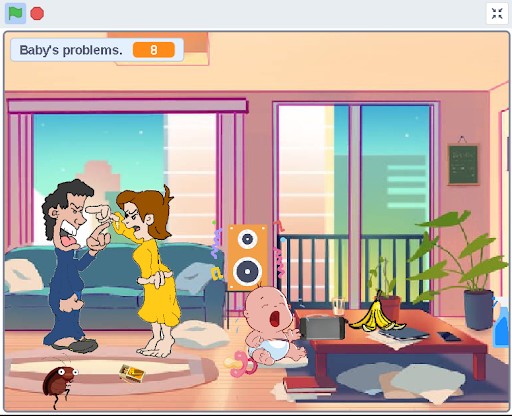
The Future of Jobs Report states that 65% of the children going into primary school today are likely to end up in jobs that do not currently exist. Another Employability Report by Aspiring Minds found 80% of Indian engineers were unemployable for lack of new-age skills, and only 3% of them have tech skills in areas of artificial intelligence, machine learning, or data science. With such trends indicating what is in store for the generation to come, it is time to reimagine computer science education and its intended purpose for children and educators.
Coding Is Just a Small Part of the Universe of Computer Science Education
The British-American computer scientist and physicist, Stephan Wolfram compares computer science to architecture where coding is simply the skill of constructing. Coding is not a silver bullet, and a superficial or limited understanding of it could cause deeper problems in the education system than the ones that we recognize today. The ‘Learn to Code’ mania risks diminishing the need for computer science education as a subject in schools. Learning is a complex process; a singular technical skill like coding cannot replace holistic computer science education.
Just like coding is a subset of computer science, computational thinking refers to the cognitive part of science. Teaching ‘computational thinking’ does not necessarily require gadgets. It also does not involve trying to get us to think like computers but rather is the way humans solve problems. Humans are clever and imaginative. We make computers exciting. Equipped with computing devices, we use our cleverness to tackle problems that may be beyond our physical capacities. Computational thinking, hence, refers to the intellectual, human problem-solving process that shapes technology.
—Shoaib Dar, Educator and Founder, Pi Jam Foundation
Low-cost scalable computer science education is helping children relate computational learning with their social realities and problems. Besides implementing scientific and mathematical concepts they learn in their regular classes, students are using technology to grow plants with minimal human intervention; build local weather systems; and write codes to automate irrigation pumps for farmers.

In Connected Code, authors Yasmin Kafai and Quinn Burke build a case for children to learn to code early, just like languages and maths. Programming has been encouraged as a tool to introduce computational thinking, a term for what computer science can do to develop reasoning and communication in an ever-increasingly digital world. This is not to say that each child who learns to code is going to develop open-source software for their communities like Mushahid–nor do they need to. Children can simply use coding to create stories, art, and animations, or to solve logical questions. At the end of the day, it is essential for each child to develop problem-solving skills including logical reasoning, critical thinking, communication, language, etc. for a secure, more equitable and digital-ready future, and coding is one of the best tools to help develop these skills in a fun way.
Kafai and Burke also argue that while computational thinking represents an excellent starting point, the broader conception of ‘computational participation’ better captures the twenty-first-century reality. Computational participation moves beyond the individual to focus on wider social networks and a DIY culture of digital ‘making’. So, while learning to code is an important part of digital learning, it is not the whole of it. The current education system however has not attended to this need across sections of the society.
Needed: More Social Sector Organisations to Teach Computer Science Education
Unless every child has access to good quality computer science education, the digital divide and the gap in problem-solving and future skills is likely to remain wide, especially among kids from the public schools versus the cash-rich private schools. Functional participation in jobs, careers, opportunities, and community development will depend on these problem-solving and computational skills.
Introducing computer science education can also increase engagement; improve academic participation in public schools; increase access to global experts and fuel creativity and innovation. The Government of India is waking up to the increasing scope of computer science education, which reflects in its New Education Policy (NEP 2020).
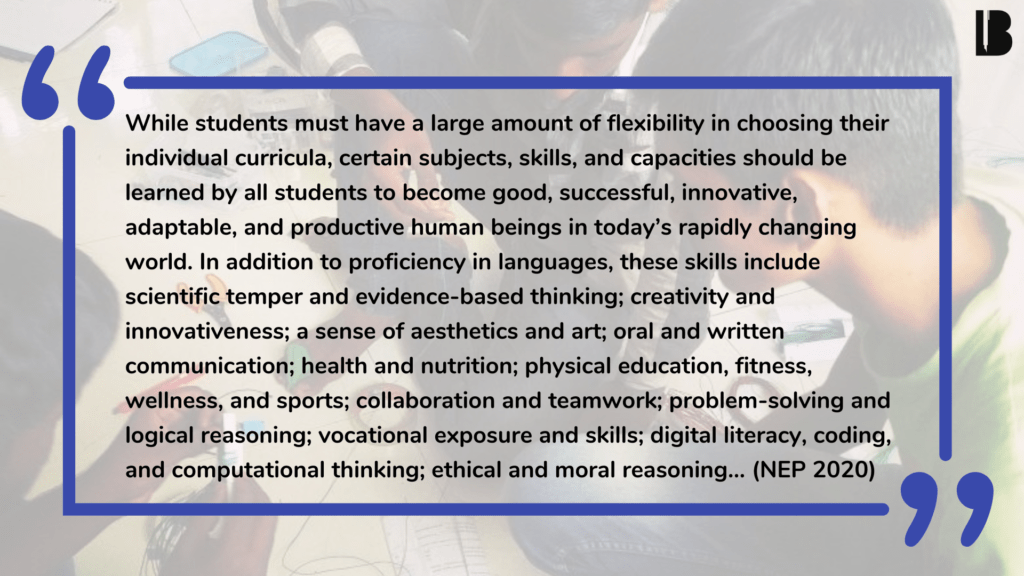
While the NEP 2020 is a timely policy update, the introduction of coding and programming in Indian classrooms is riddled with several bottlenecks. Programming classes are currently available to kids who can afford internet and electricity connections, have access to schools, and are able to pay for these classes, which require supporting devices. Only 8.5% of children in India have internet access, which is alarming as it may widen the skill gap in the country. Most students are at the risk of falling behind in terms of having the digital and problem-solving skills; even if they are part of the archaic education system that thrives on rote learning, and does little to spark their imagination, innovation and creativity, or computational thinking.
There is also a crying need for a curriculum update contextualised for Indian children the languages they are familiar with and enough teachers with the necessary skills to teach coding and programming to children, which goes beyond the basics of ‘paint’ and ‘excel sheets’. Shoaib says, “At the school or foundational level, children should not necessarily aspire to be coders or developers, or that is not how we should their aspirations to be. All they need to be is creative problem-solvers.”
Today we are looking at millions of children and young adults who could benefit from computer science education, and many who lack the resources to pay for expensive coding classes. Commercial players cannot bridge the gap alone since their reach is mostly tilted to the urban consumer base and goals are driven by profit making. However, this gap is being bridged by nonprofits such as Pi Jam Foundation that provides low-cost solutions for making computer science education accessible, innovative and fun for children in government schools. They do so using tools and platforms like Raspberry Pi, Code.org, or Khan Academy.
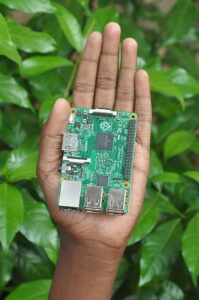
Many public schools have started working with organisations like the Pi Jam Foundation to introduce coding classes for children. They do this by setting up low-cost computer labs, known as Pi Labs, using open-source hardware and software like Raspberry Pi and Scratch, to address the infrastructure and access problems. Yashoda, a Pi Lab instructor, has successfully set up a computer lab in the kitchen of her small house in Ganga Khed, a rural village in Maharashtra’s Parbhani. Throughout the pandemic, she took lessons for 25 students from her kitchen set-up. All she needed was a tiny credit-card-sized Raspberry Pi device that doubles up as a central processing unit.
Pi Jam Foundation is also working with the state governments, Directorates of Technical Education (DIEs), and corporations including Pune’s Zilla Parishad, Jammu and Kashmir’s Samagra Shiksha, and about 300 public schools. They work in collaboration to provide contextualised curriculum for computer sciences with specific objectives that assist in building skills such as computation, problem-solving, programming, algorithm, machine learning, and more.
Building Contextualised Computer Science Curriculum
Pi Jam Foundation has come up with a 50-hour computing curriculum for each grade that is shared with the schools in the form of teacher modules and sample lesson plans. The curriculum is designed to progress gradually—from using visual coding tools like Scratch, Python, HTML, etc. to applying it across subjects like maths, science, geography, and even English. The teachers’ training focuses on getting them comfortable with the technology tools and platforms used in the curriculum, which usually involves Raspberry Pi, Scratch and Python. These regular training and debriefing sessions are held throughout the year to enable and upskill the teachers.
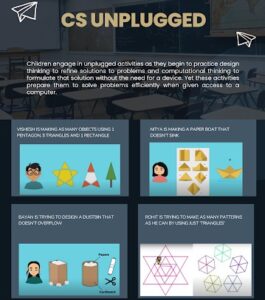 The foundation also trains existing maths and science instructors for execution and modelling of curriculum, which has two aspects to it, creative and physical computing. The curriculum is aligned with existing subject curricula allowing teachers to build the subject skills through the interactive use of technology. For areas where access to the internet is a problem, Pi Jam Foundation has come up with computer science ‘Unplugged kits’ that use activities to hone computational thinking without the need for devices.
The foundation also trains existing maths and science instructors for execution and modelling of curriculum, which has two aspects to it, creative and physical computing. The curriculum is aligned with existing subject curricula allowing teachers to build the subject skills through the interactive use of technology. For areas where access to the internet is a problem, Pi Jam Foundation has come up with computer science ‘Unplugged kits’ that use activities to hone computational thinking without the need for devices.
Much of the existing computing curricula makes coding tougher than what it needs to be for children. At the Pi Jam Foundation, effort is being put into making complex devices easier to use with the database of ready-to-use APIs so that children can focus on problem-solving rather than having to just learn more lines of code. Shoaib says, “We [Pi Jam Foundation] believe that computer labs need to be spaces that allow students to explore, experiment, tinker and create.”
Real-World Impact of Democratising Computer Science Education
If we were to go by the response that organisations like Pi Jam Foundation have been receiving, then introducing computational learning has fuelled children’s creativity, design thinking, and prototyping. This renewed approach to computer science education has got the children hooked to using block-based coding [that uses a drag-and-drop block with coding instructions to create stories, games animations, and more with a basic introduction to computational thinking through block visuals vis-a-vis text] as a tool to find solutions for problem statements that they deem fit for resolution.
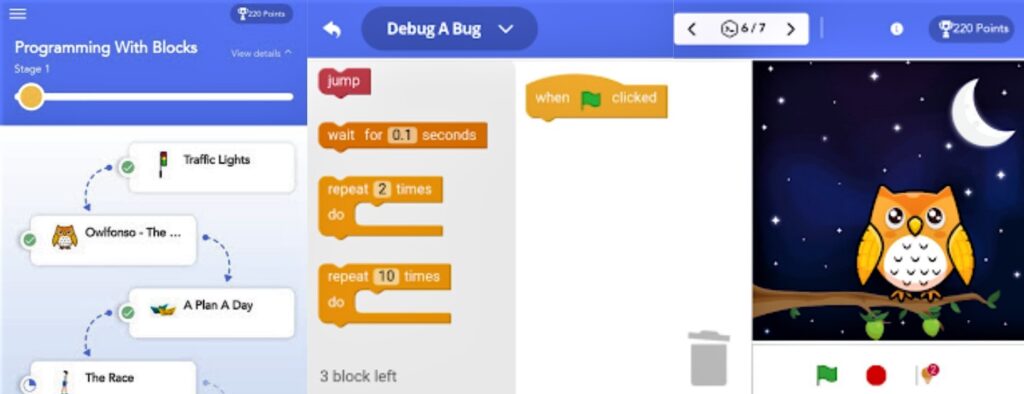
Other variations of the open-source include learning block-based coding in Hindi where the goal is to understand basic programming and computer science concepts; which is done by analysing daily life in algorithm terms. To give an idea, there is a game in the app in which the child is required to help an athlete finish their race using block coding.
Improvement in Problem-Solving Ability and Algorithmic Thinking
In the last five years, Pi Jam Foundation has trained 1.16 lakh children in computer sciences, which indicates there is untapped potential in building computational and problem-solving skill sets among young learners by using low-cost tech in public schools. The impact data, since the launch of Pi Labs in 2017, shows that 90% of girl children want to pursue a career in technology, 89% of kids are curious about learning more about programming and technology, and 100% of students create digital artefacts and projects.
Such an approach to computer science has been welcomed positively by schools and educators. “Seeing the amazing work that Pi Jam Foundation has done to reach students impacted by COVID-19 school closures is just another reminder of how important their work is now more than ever,” says Priya Nazare, Principal, at Pune’s Sardar Kanhoji Angre School. She adds that she was always sceptical if coding would be something that her students would not enjoy and experience boredom, but to her surprise, she has never seen any single kid getting bored in the class. It is remarkable that computer science education is being made available and relevant by engaging so many young people who would not have had the opportunity to learn otherwise.
Children too find this approach to learning an enjoyable and creative one. Shankar Sangam, a student from Pune’s Pujya Kasturba Gandhi English Medium School, has built a stick that beeps with moisture and an ultrasonic sensor for the blind, to detect puddles and oncoming dangers or threats on the road. Gyaneshwari, another student, has used her programming skills to create an automated school bell that does not require electricity to operate because her school often does not have power.
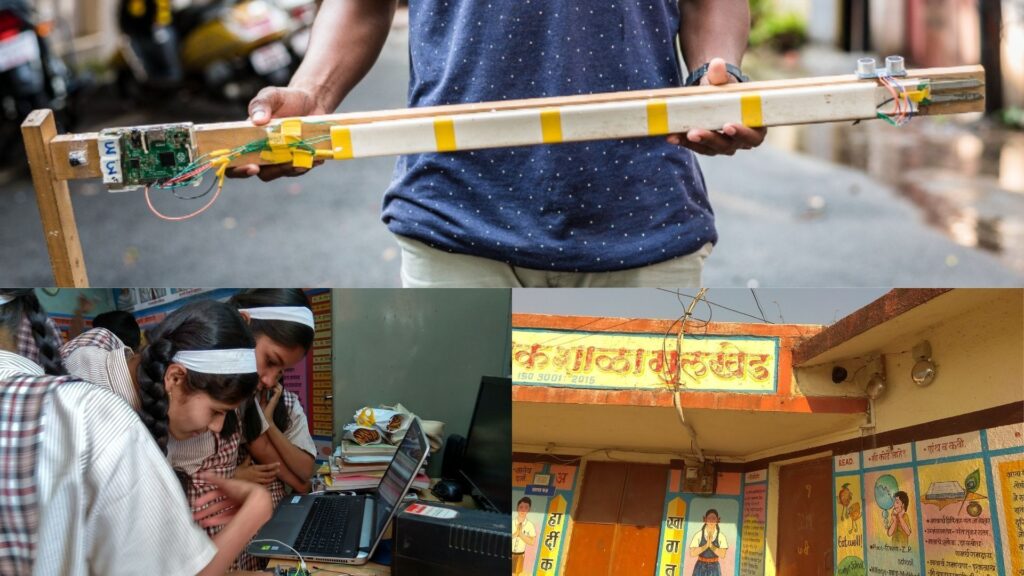
These children are learning to communicate complex ideas by breaking down or building ‘blocks’ that logically fit into their quest to seek solutions. In the process, they are developing computational thinking without necessarily knowing it. Improving the problem-solving ability through programming and coding is possible and an area that needs further push from stakeholders involved. “Given the emphasis on Digital Education in the budget [the budget speech by the Finance Minister in the Parliament in February 2022], we are hoping that it translates into effective and proven solutions that cater to complex problems that surround the public education system in India,” says Shoaib.
Featured image is of students designing an automated school bell that has been installed in their school, which operates without electricity since their region does not receive electricity throughout the day; Courtesy: Pi Jam Foundation


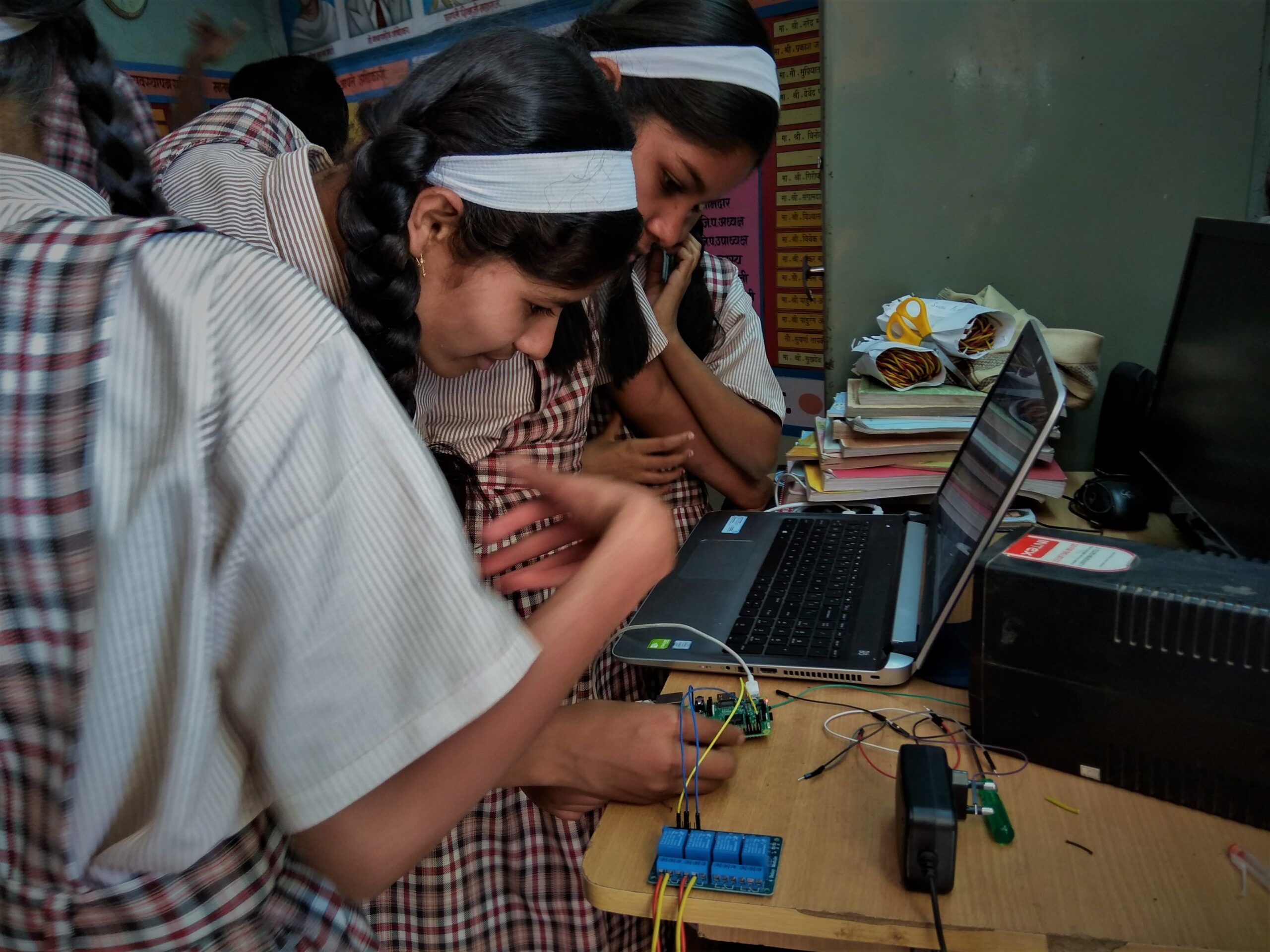
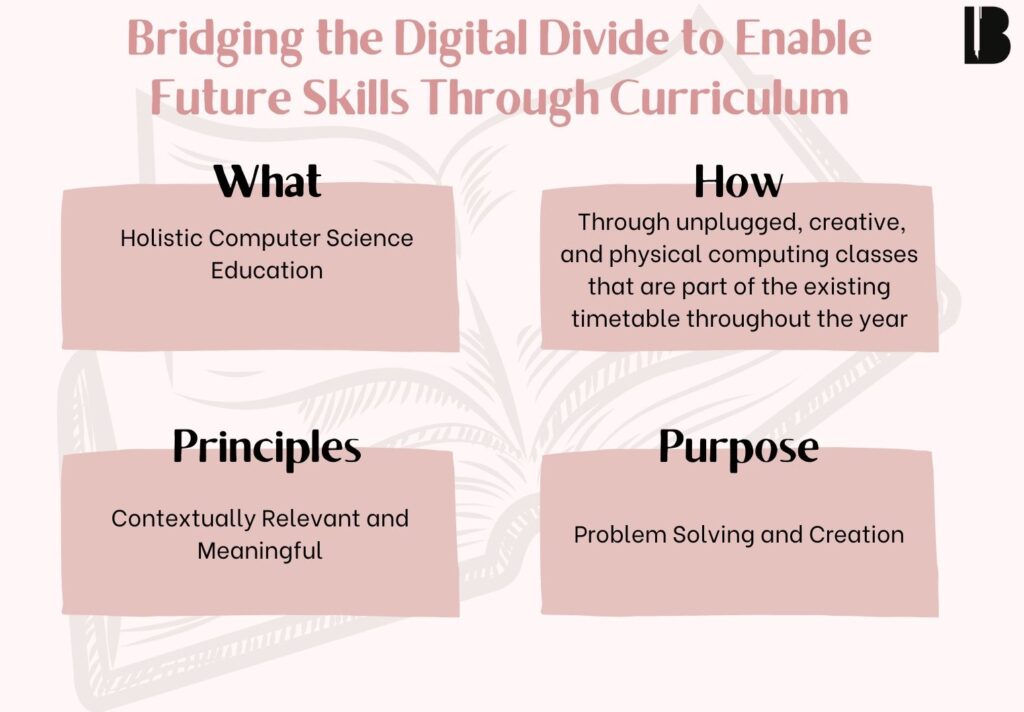
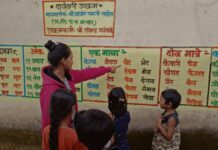



[…] SNHU students! Did you know that your login credentials to the SNHU Student Portal can unlock a world of possibilities beyond just checking your grades? That’s right, there are plenty of features and tools available on […]
There are several types of data quality https://provectus.com/data-quality-assurance/ . Accuracy and completeness are the most common. Both measure the extent to which data is consistent. Data should be available in multiple sources and reflect the reality. Incomplete records pose one of the biggest challenges for organizations, especially those that rely on consumer-provided data. Data should also be complete and accurate, so that it can be used as reference material. The following steps can help ensure your data is reliable.